Gastón Acurio: Peru’s Celebrity Chef
posted on August 2nd, 2014 in Food, Peru
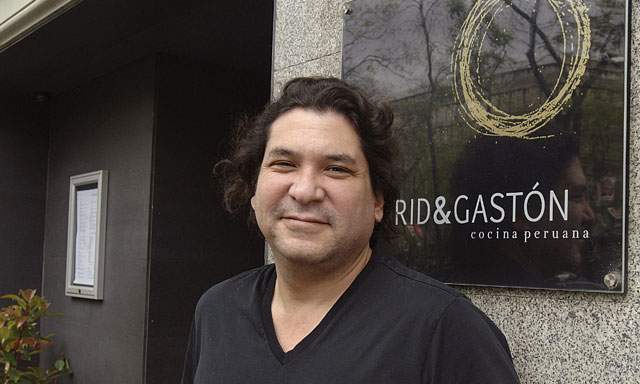
Master chef Gastón Acurio in front of his flag-ship restaurant, Astrid & Gastón in Lima, Peru
July 23, 2014
The Washington Post
In the kitchens and cafes of the food-crazed Peruvian capital, history is divided into two epochs: Before Gastón Acurio and After Gastón Acurio.
The BG era was a time of darkness, confusion and ketchup.
Then Gastón Acurio opened his first restaurant in 1994, and began remaking gritty Lima into the culinary capital of South America.
Gastón Acurio: The Celebrity Chef
Calling Gastón Acurio a celebrity chef today is like saying Oprah is a talk-show host. He is more of a modern food shaman: artist, interpreter, healer, impresario and national pitchman.
A series of unpopular presidents has even left some Peruvians urging him to run for president. He shudders at the thought.
“But it tells you something,” said Acurio, relaxing in jeans at his studio-office near the ocean in Lima’s historic Barranco neighborhood, where his cooking show is recorded in the kitchen. “Today a chef here is someone more trusted than a politician.”
And why not? Gastón Acurio, 46, has made Peruvian cuisine into the country’s proudest export. He runs a swelling global operation of 44 restaurants, including three in the United States, with plans to open a new place next year in Washington, D.C., location still undetermined.
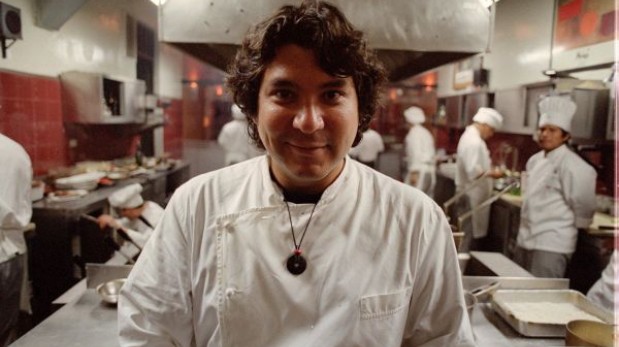
The Gastón Acurio franchise includes food festivals, cookbooks and restaurants spanning a range of themes and price points, making them accessible to a wider clientele. Panchita, specializing in Peruvian anticuchos like grilled cow hearts but also serving burgers and fries, draws a big lunch crowd. Madam Tusan is Gastón Acurio’s take on the Chinese-Peruvian cuisine known as “chifa.” Gastón Acurio’s original, high-end bistro, Astrid y Gastón, can’t boast of a Michelin star — the prestigious guide doesn’t yet review South American restaurants — but it was recently rated one of the world’s top 50 dining establishments by Restaurant magazine.
Its fixed-price menu, Virú, is a 29-course flavor odyssey through oceans, mountains, deserts and jungles, offering a “journey through modern Peru.” Price: $240 with wine.
“This is what Peru is all about today: a land of dreams, challenges and battles,” the introduction reads. “The home of young minds that reap their wounds, sheath their swords and embrace themselves to celebrate together and in peace.”
If that sounds like a bit much to swallow, patrons quickly move on to bite-size plates whose contents are listed in terse nibbles — “Crab, stinging nettle,” “Quinoa sprouts” and “Toasted pig jowl.”
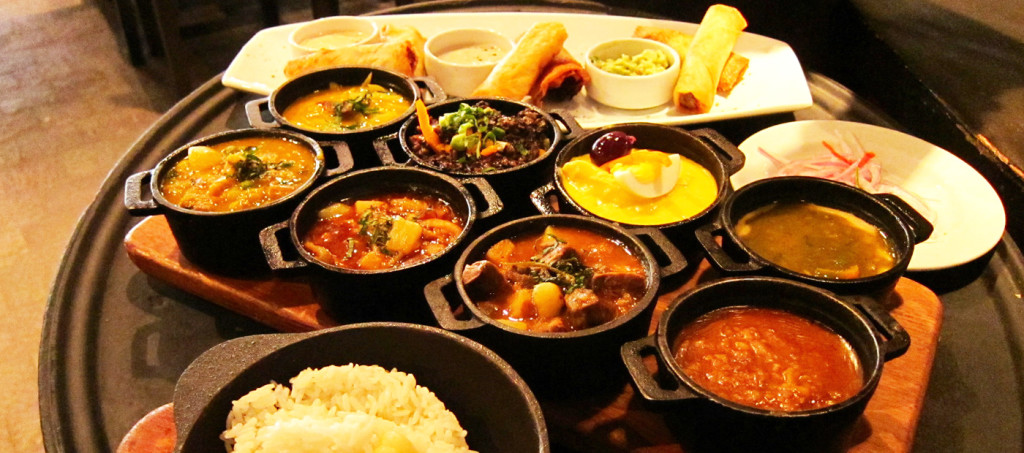
Criolla cuisine at Gastón Acurio’s Panchita Restaurant in Lima, Peru
Gastón Acurio: Abstract Artist
Like any abstract artist, Gastón Acurio wants the plates to add up to more than a good-looking meal. He subscribes to the culinary school of thought that views ingredients as a series of political and moral decisions shaped by environmental principles, cultural statements and ethical choices.
“Cooking allows you to promote a series of values,” he said. “The chef is someone who acts as a bridge between consumers and farmers, fisherman, industry and nutrition and health.”
In 2011, Gastón Acurio clashed publicly with then-President Alan García over the use of genetically modified crops, and later succeeded in getting them banned from Peru for 10 years.
For his seafood restaurants, like the popular cebicheria La Mar, Acurio has developed a customized supply chain of smaller-scale “artisanal” fishermen, sending his trucks up and down the Pacific coast several times a week to retrieve their catch.
He instructs his chefs to plan menus around the seasonal availability of ingredients by talking directly to the guys in the boats. “When the chef knows what he’ll be getting next week, then he, the fisherman and ultimately the consumer all benefit,” Acurio said.
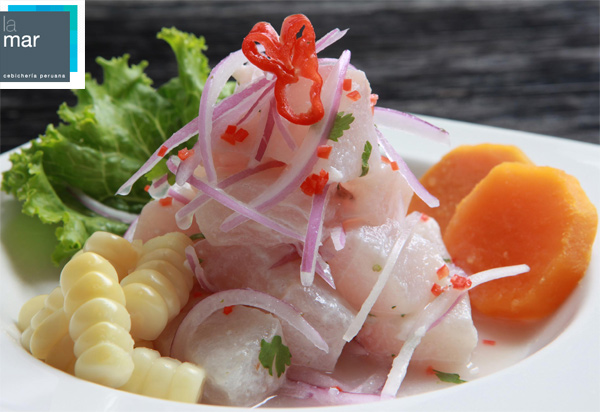
A plate of classically prepared ceviche–raw fish marinated in lemon juice chez Gastón Acurio s
The son of a former Peruvian senator, Gastón Acurio played in a heavy-metal band and dropped out of law school to study cooking at Le Cordon Bleu in Paris, where he met his German-born wife Astrid Gutsche. They returned to open Astrid y Gastón in Lima in 1994 as a traditional French restaurant, but Acurio grew bored, and he began replacing the imported items with local ingredients and experimental plates.
The overwhelming variety of Peru became an asset and a creative challenge. The country is a stew of Japanese, Italian, Chinese, Spanish and Jewish immigrants, heaped onto Peru’s pre-Columbian indigenous cultures. Then there is the phenomenal biodiversity of a country with dozens of sub-regions and microclimates stretching from the Pacific to snowy 21,000-foot peaks to Amazon jungles.
“We have more than 2,000 varieties of potatoes and 200 kinds of ajichilies,” Gastón Acurio said. “New ingredients arrive for me to sample every week.”
What has made Acurio especially beloved in Peru are his long coattails. By globalizing Peruvian cuisine and Peruvian products, he has created countless jobs for other chefs and suppliers.
“Gastón made Peruvian food fashionable,” said Indira Vildosola, a restaurateur who worked as a chef in the United States, Chile and the Caribbean before coming home to open her own place in Lima.
When she started out abroad, Vildosola said, she had to explain to others what Peruvian food was. But as Acurio’s fame spread, foreign restaurant owners began to seek her out, asking her to prepare Peruvian ceviche, chicken and other dishes. It’s been a giant boost for the country’s self-image, she said.
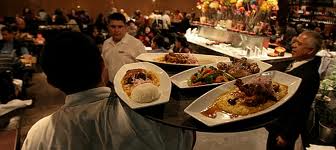
Acurio’s Panchita Restaurant in Lima
“We used to take pride in Machu Picchu,” she said, “and now we’re proud of our food.”
Gastón Acurio is training a new generation of Peruvian food evangelists at a small culinary school in the slums on the northern outskirts of Lima. The neighborhood, Pachacutec, was settled by squatters who build shacks and tiny houses onto the sandy hillsides beyond a massive oil refinery.
Today the school gets about 500 applications a year for 25 slots. Tuition is one-fifth the cost of culinary schools elsewhere, and many of the students are from hard-luck, humble backgrounds.
Delia Puma, 21, said she travels four hours each way to reach the school, setting her alarm for 3:45 a.m. She grew up helping her parents sell sodas and snacks on the beach. She speaks confidently of opening her own seafood restaurant serving the Peruvian-Japanese fusion cuisine known as Nikkei. “But I want to see the world first,” she said.
The instructors at the school are chefs at Acurio’s restaurants. They rotate the students through courses in pastries, meats, sauces and other fundamentals, as well as business administration and accounting. After classes, many head to Lima’s upscale districts for internships in restaurant kitchens.
“I don’t have any doubts that I’ll be able to open my own place,” said Cesar Mendoza, 20, who plans to raise money by launching a catering company with his parents when he graduates in December.
“With hard work, you can do anything here,” he said. “The only problem is there’s so much competition.”
Acurio says what impresses him most is that the students seem so innovative and fearless of missteps. They’re not trying to prove to anyone that they’re just as capable as European chefs at following traditional recipes.
“They’re completely free to create,” Gastón Acurio said. “There are no borders anymore.”
